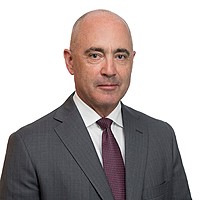The return of the active investor
The one thing I know for sure is that the world is a pretty messy place at the moment. It’s messy because the easy monetary policy settings that prevailed broadly since the GFC have come unstuck, with the resultant inflation intersecting with some significant structural themes that are playing out – decarbonization, deglobalisation and evolving demographics. The global order and the playbook of the last several decades is being rewritten. This makes it hard to be too confident in any forecasts for the year ahead.
Amid the uncertainty, it’s important to take stock of where we are now and what influences are playing out, which can help guide where we invest, where we take risk, how much risk we take, and indeed where we need to concentrate our research focus.
Reflecting on 2023 as a starting point, the economic consensus was for recession which would give Central banks the confidence that inflation was back under control moderating and that they could pivot on rates. As 2023 draws to a close, recession remains a risk (but not the reality), inflation remains stubbornly high – particularly in Australia (although moderating here and elsewhere) and rates are still at risk of rising further before they fall. 2023 has been more resilient globally partly because household balance sheets have, on average, remained in good shape, and fiscal policy has by and large remained pro-cyclical. Follow the money.
From a macro perspective, a key question from here as we enter 2024 is whether we’ve all simply got the timing wrong and eventually the big rise in interest rates will bite, or the offsets are too strong and that growth will continue – maybe at a slower pace but continue to grow nonetheless.
Recession still seems to be a possible outcome in 2024 as excess household cash balances are depleted and the lagged impact of higher borrowing costs bite. However, fiscal policy remains easy and some major structural themes, like onshoring, infrastructure spending and technology such as AI will provide underlying support for growth. In any event, Central banks will likely need to both act and talk tough on rates as the structural underpinnings for inflation are less favourable than they have been for decades, making it harder to be confident that inflation will return sustainably to more comfortable levels, which means a world characterized by weaker and more volatile growth, sticky inflation and higher interest rates. That’s not to say there won’t be adjustments to rates both up and down, but the base level for rates will be a lot higher than we know for some time.
For savers this is good news reflected in higher passive income levels. For borrowers this is a much more challenging environment as the cost of debt, and the cost of refinancing that debt, rises. For investors, though, there is a lot to like about the structural reset of the investment environment.
Across the curve both higher yields and a re-establishment of risk premium provide a solid base for future returns. With liquidity less abundant, investments need to compete more on fundamentals meaning quality and price will be important – value, and risk, will likely matter again. Investors have a choice with risk free assets now offering a return meaning the opportunity cost of patience and judiciousness, as opposed to the indiscriminate allocation of capital, is much less. While markets have not priced recession (and may not), they have moved to price a very different environment to the one that has dominated the post-GFC and COVID eras. Higher yields, wider credit spreads and improved valuations in equities are consistent with this. In private markets, pricing is also reflecting this repositioning, particularly in areas where pricing is linked to bond yields. Good news for new capital looking for opportunities.
We believe that these changes are here to stay for some time at least. This will mean that as a general rule, research and active security selection and asset allocation (tactical and strategic) will be key drivers of alpha and risk management. Passive approaches which thrived in a free money environment where the rising tide of liquidity lifted all boats, will be tested, particularly if recession does ultimately unfold and pressure earnings more broadly and individual business models come under pressure. Quality will matter in an environment where capital is more scarce.
Nothing above suggests 2024 will be an easy year. It will be messy and no doubt surprise. That said, the opportunity to build a diversified portfolio of assets is as good as its been in some time. There’s lots to like on the defensive/quasi defensive side of the opportunity set that will offer returns aligned with the longer run expected returns from equities for much lower risk (the lower ranked parts of the credit curve and parts of the private debt universe head the list). Likewise cash (or cash proxies) with yields around 5% suggest the opportunity cost of waiting for markets to truly dislocate is low. 2024 will provide lots of opportunities to deploy this cash.
Australian Investment Outlook 2024
In our Outlook Series for 2024, Schroders Australia’s experts give us their on-the-ground take of markets, and pull back the curtain on the thinking and strategies that will guide their capital allocation in the new year. You can read all of our outlooks for 2024 here.

